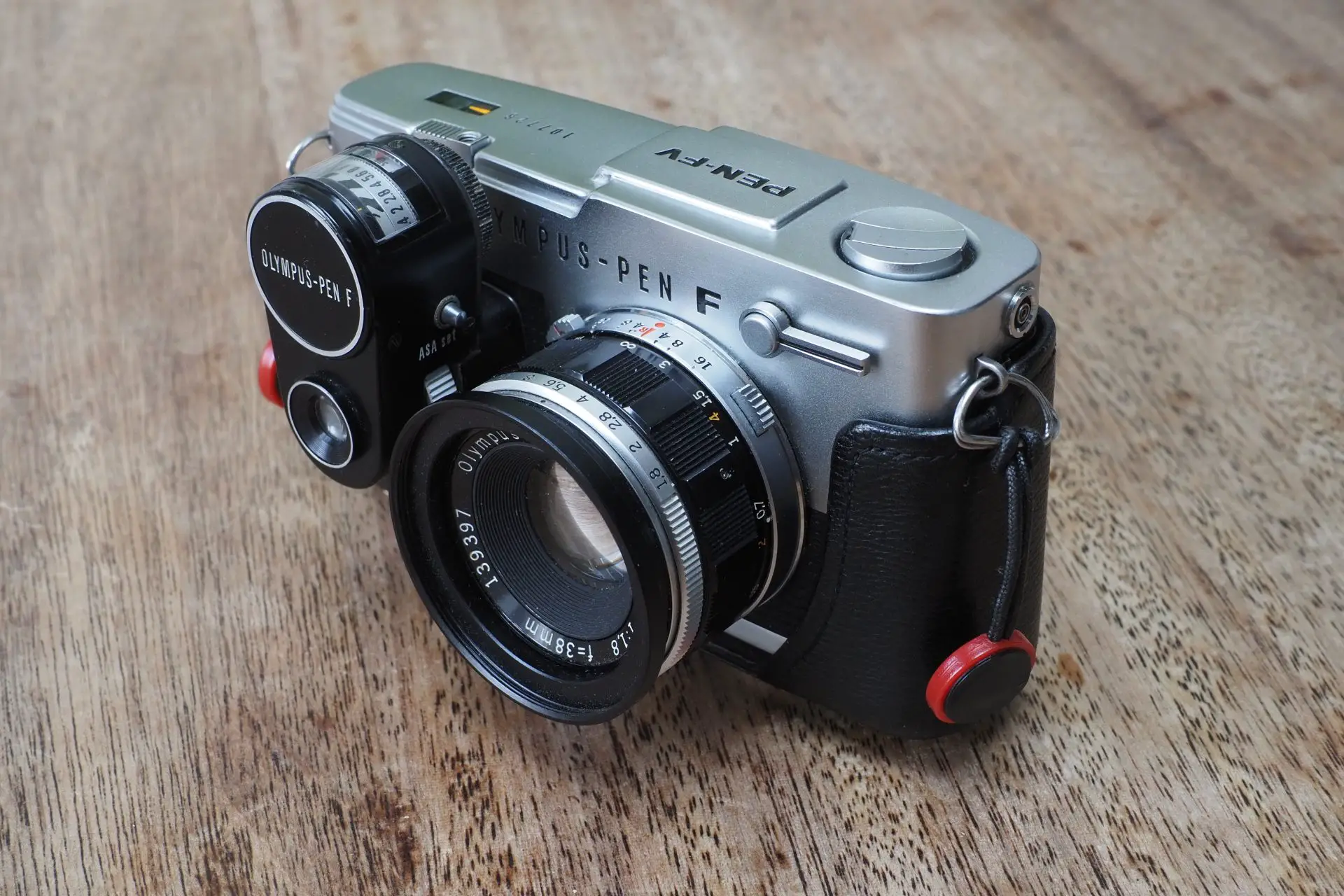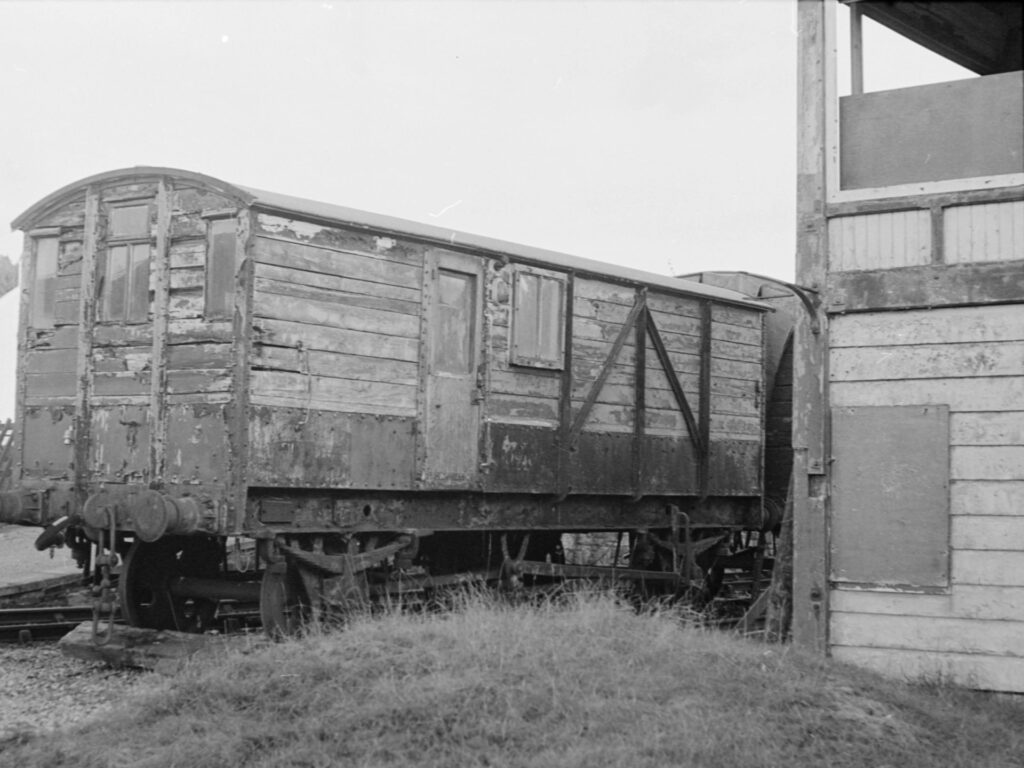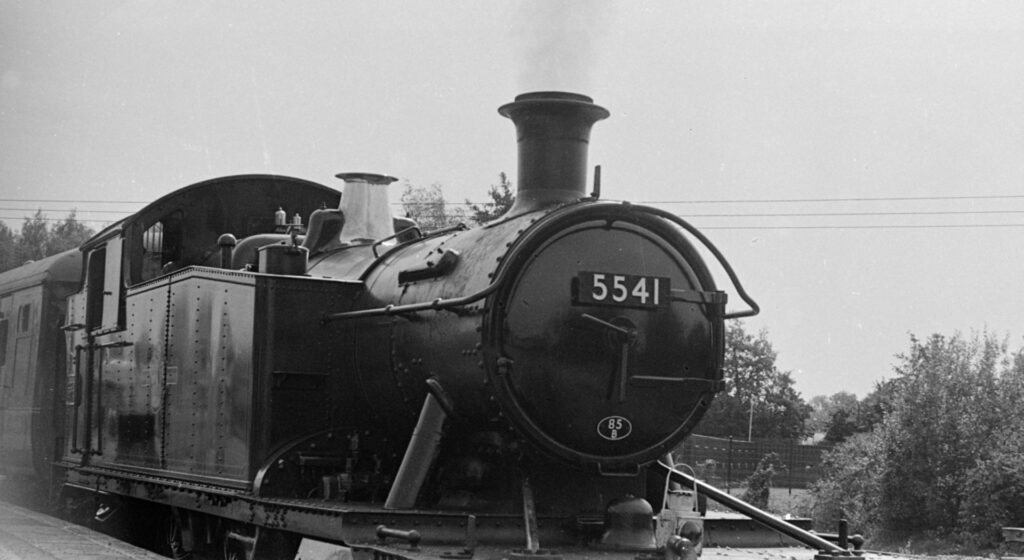Five Frames of Trains with an Olympus Pen FV

Note: This post was written for 35mmc For many of us film photography comes with many advantages. The disconnect from the world digital technology. The enforced rituals and meditations. The total mental and physical involvement in producing that final physical asset, the negative, and maybe even a print. Few of us would include size and weight in such a list. Holiday travel on trains and buses with our k9 companion in tow, forces us to pack light. My beloved OM1-N is sleek, but full frame lenses, even the Zuikos, are not.

The carriages of the Dean Forest Railway at rest on a station platform curve off into the distance.
My search for a camera that could give me the control and involvement I crave, yet fit in the spare space I have has brought me to the Olympus Pen FV. This is the 3rd incarnation of the Pen half-frame SLRs, featuring the bright viewfinder of the F, but with single stroke advance and improved shutter of the FT. The body is small, if not exactly light (with standard lens it comes in at 615g). The clip-on light meter is far from essential, but is a reasonable quick check of my sunny 16 guesses.

An old train cargo carriage next to an old train station tower
The thing that has truly made me fall for this system though is the 38mm f/1.8 standard lens. This is equivalent to about 54mm. Not only is this a little longer than normal, the default portrait mode, and 4:3 aspect ratio make it feel quite a bit longer. That would normally put me off, but I can’t stress what a pleasure this lens is to use. The focus throw is just under half a turn, and buttery smooth. It also has a minimum focus distance of 35cm, when coupled with a close up filter, this makes for great detail shots. Unfocused areas are best described as “characterful”, with pentagonal highlight, but we do not always get to choose the things that we fall in love with.

Head on view of an old rusty cylindrical container train carriage on tracks,
Another advantage of half frame is, of course, needing less film. 76 shots on a roll 36 frame roll is common, I’ve gotten 80 by loading rolls in a dark bag. The lust of eeking out that extra shot has come with an unexpected issue. The camera’s single stroke film advance (compared to the Pen F’s two stroke), allows it to impart considerable force. In my eagerness to get the shot of the locomotive, I did not notice this was the last shot on the roll and wound on with enough force to tear the sprocket holes, hence the extra crop.

An old steam train engine, with it’s number on the front plate.
The big trade off with half frame is grain. As much as I like grain, half frame can really push the limits of the aesthetic. Film choice is key. I have found Ilford FP4+ in D76 1+3 to be a good choice. For our latest trip to the Forest of Dean I wanted something a little faster. Previous effort with HP5+ were OK, but I have had great results before from XP2+ in D76 in full-frame. My original intention was to develop this roll in 510 Pyro, hoping that the staining property might soften the grain a little, perhaps approaching the dye clouds of C41. As it happened I had two other rolls of C41 unprocessed for some time, so opted for my local friendly high street lab. I have attempted one print from the resulting negatives, from the shot of the engine, which printed very easily and I think we be perfectly acceptable at 8x10. I find scanning C41 tricky, and my process is not from optimal, so these images may not show these images at their best. Overall though I am very pleased with the results.

An old train carriage (maybe?) abandoned in a field
There is a lot to love about the Olympus Pen FV. The lenses are excellent, compact, and fun to use. The bright view finder, and true SLR nature makes focusing quick and easy. Classic grain 100 speed films can still look great in half frame. For faster films XP2+ performed well here, but both HP5+ and Kentmere 400 give results I’m still happy with too. I suspect Delta 400 would be even better for those more confident in their metering. The biggest downside of half-frame is not image quality, but a direct result of it’s biggest selling point. If you shoot film to slow down, 72 frames is an awful lot of photographs!
comments powered by Disqus